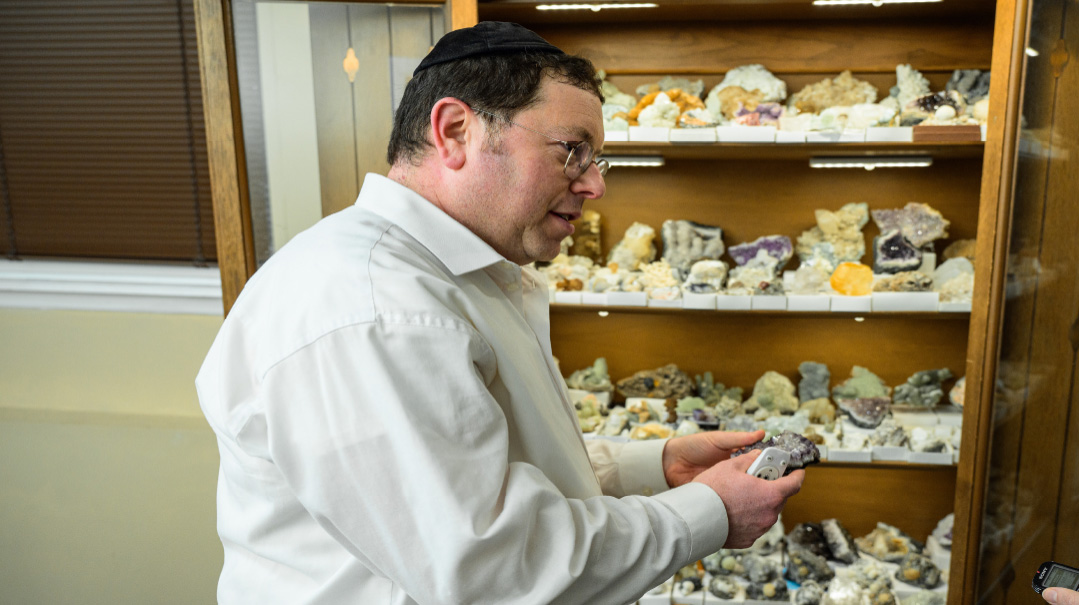Rock Star
| April 30, 2024Under Monsey's sprawling yards lies a treasure of volcanic lava

Photos: Naftoli Goldgrab
S
ay the name “Monsey” and images of suburbia come to mind. But Heshy Friedman knows something that most others don’t about his hometown: Beneath its rolling lawns and leafy trees, small parts of Monsey and its environs are built on volcanic rock, which holds a literal treasure trove of minerals and geological gems just waiting to be discovered.
A quick glance at the path leading to the Friedmans’ home is all it takes to differentiate it from the rest of the high ranches on the block. Instead of a neat grassy lawn or decorative shrubs, an assortment of irregularly shaped rocks line the walkway to his front door. Walk into Friedman’s home, and it’s immediately clear that this house is anything but typical.
The lower level is comprised of several rooms, each of which is at least partially dedicated to his extensive mineral collection. A guest bedroom houses a small breakfront, but instead of displaying crystal decanters or silver candlesticks, the lighted cabinet is filled with small, mostly white, cotton-lined boxes. Each contains at least one mineral, although a few hold several smaller specimens clustered together.
There must be dozens of minerals of all sizes and shapes in that breakfront: sparkling purples and pale greens stand out amid varying shades of white, grey, and amber. While some minerals are smooth, most are jagged, with otherworldly protrusions varying in texture and shape. Each box has a label identifying its type, where it was unearthed, and whether it was something that Heshy discovered on his own or acquired from another collector.
All of them are volcanic rock, found within a 50-mile radius of the Friedman home.
Oops! We could not locate your form.







